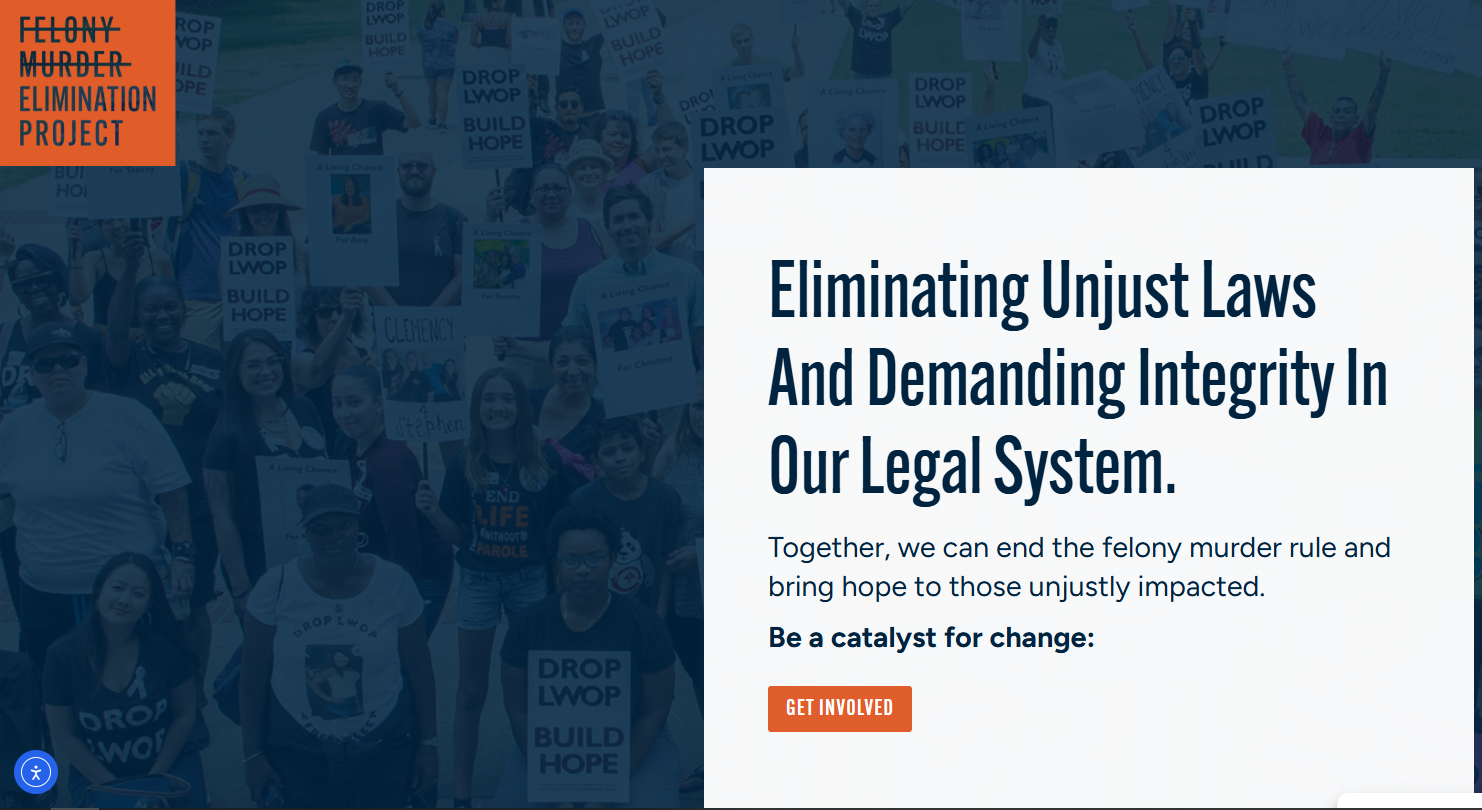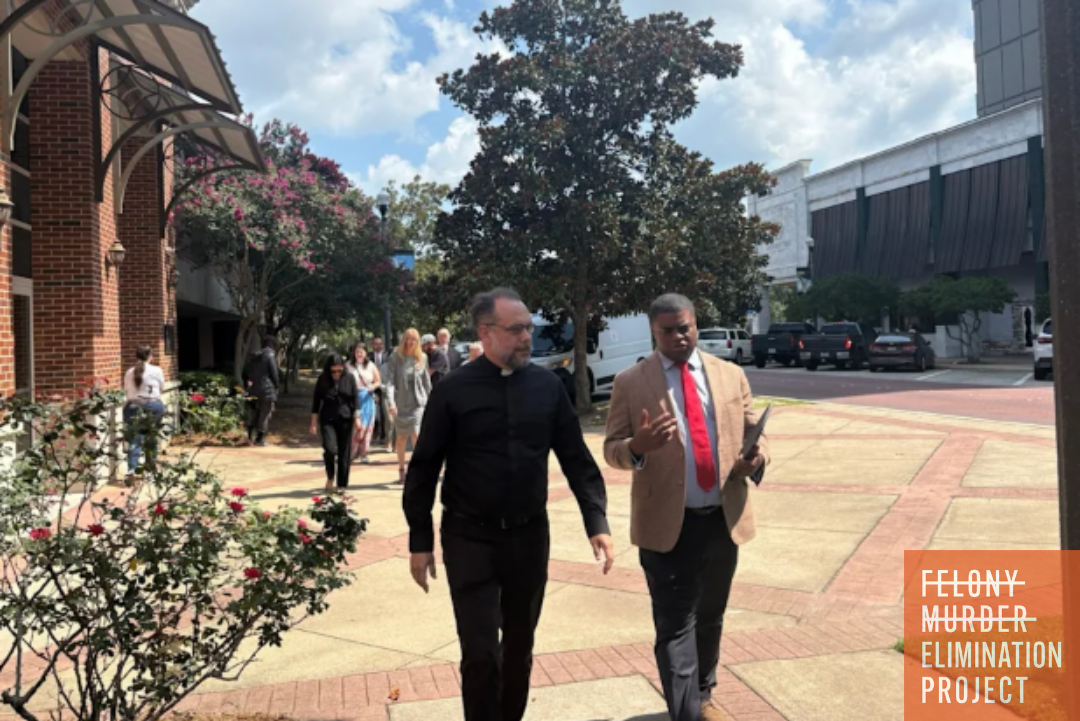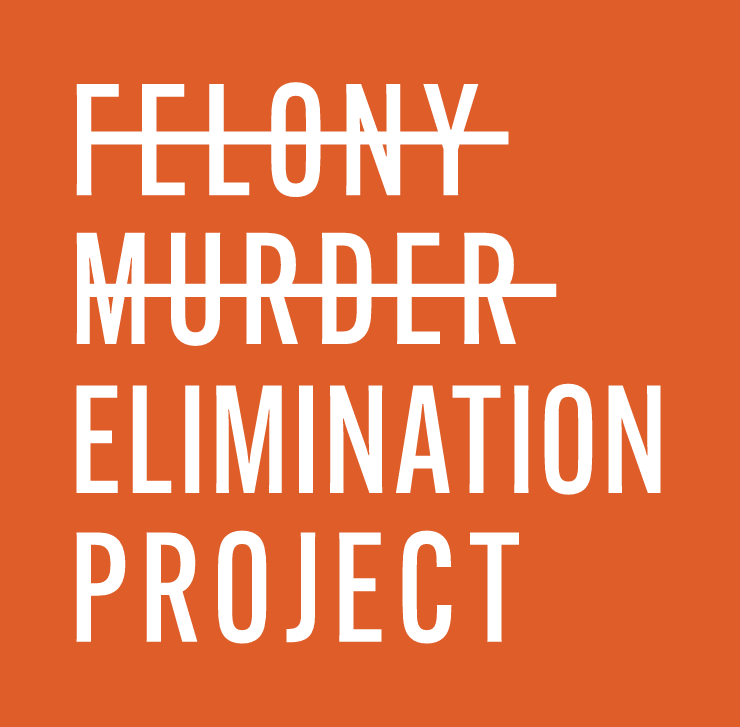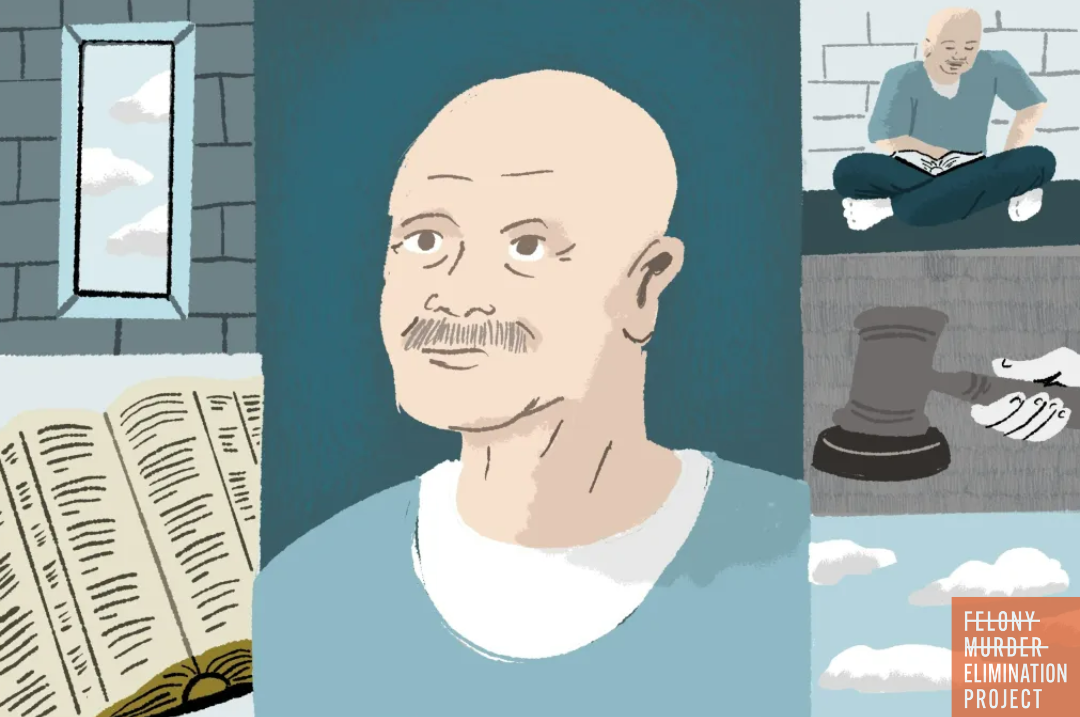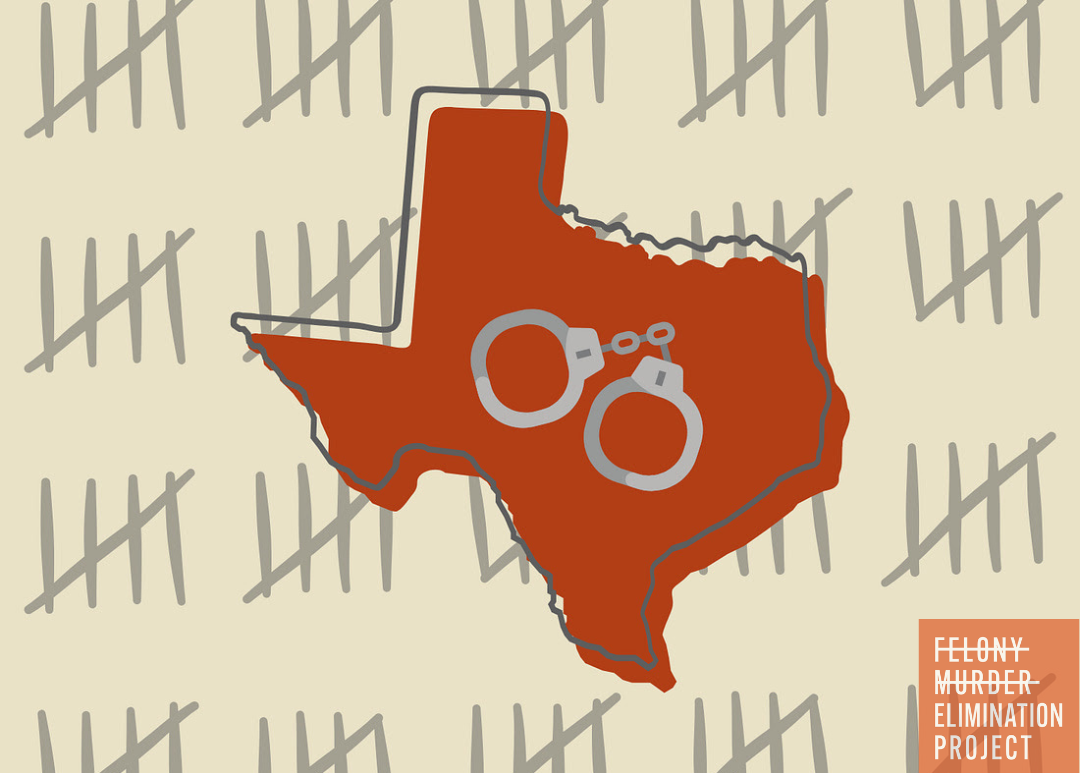Investigative Report on Felony Murder Doctrine Wins Pulitzer
“It’s truly one of the cruellest ideas in the American legal system, and most people don’t even know it exists.”
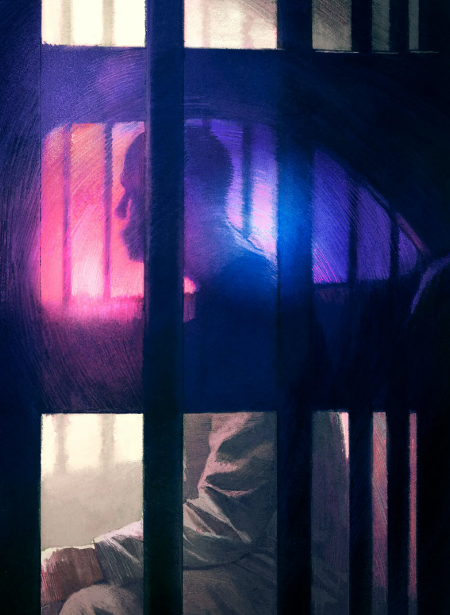
"Sentenced to Life For An Accident Miles Away," an investigative report written by Sarah Stillman for the New Yorker, about the felony murder doctrine and the indictment of the US legal system’s reliance on the felony murder charge and its disparate consequences, won the 2024 Pulitzer Prize for Exploratory Reporting. The award is given to a "distinguished example of explanatory reporting that illuminates a significant and complex subject." This report was published in the December 18th, 2023 issue of the New Yorker.
Excerpts from this report are below.
*****
What makes a murderer? Intent is often assumed to be a factor. But, for hundreds of years, the felony-murder doctrine has muddled this conceit.
The question came to a head in 1953, when, despite widespread pleas for clemency, a nineteen-year-old Londoner named Derek Bentley was executed because his sixteen-year-old accomplice in a burglary killed a policeman during the crime. Four years later, the U.K. abolished the doctrine, and other Commonwealth nations followed suit. The United States, meanwhile, went in the opposite direction.
According to Guyora Binder, of the University at Buffalo School of Law, the modern felony-murder doctrine is best understood as “a distinctly American innovation.” Although it was first applied early in the nineteenth century, use of the charge surged in the nineteen-seventies, when the era of mass incarceration began. Fifty years later, Binder contends, no country relies on the doctrine more.
In Tulsa, two men attempted to steal some copper wire from a radio tower and accidentally electrocuted themselves. One of them died and the other was charged with first-degree murder while recovering from his burns in the hospital; the girlfriend of the deceased was also charged with murder, for having driven them to the tower. In Topeka, a twenty-two-year-old made the mistake of hiding his gun atop his girlfriend’s refrigerator; he was charged with first-degree murder several days later, when a child inadvertently fired it at a thirteen-year-old girl. In Minneapolis, a sixteen-year-old girl who sat in the car while two older men killed someone in a robbery was charged with felony murder. Deemed too young to enter the adult prison population after her conviction, she was placed in solitary confinement for months, purportedly for her own safety. In Somerville, Tennessee, last May, three teen-age girls overdosed on fentanyl in their high school’s parking lot before a graduation ceremony. Two of them died, and the surviving girl was charged with murder.
Remarkably, no one knows how many people in the United States have been imprisoned for the crime. So in 2022, working with students and colleagues at the Yale Investigative Reporting Lab, I decided to try to get a sense of the scale. We started by filing public-records requests to state corrections departments and other agencies across the country; to our surprise, most told us that they weren’t keeping track. “The records do not exist,” an official at the Virginia Department of Corrections wrote, in a typical response. In most states, a felony-murder conviction gets lumped in with other types of murder, clouding the data. It was as if the extent of felony murder in America were hidden by design.
When we eventually secured robust data from eleven states, our lab’s analysts discovered that racial disparities for felony-murder convictions were higher—sometimes far higher—than the already disproportionate rates of Black incarceration over all. In Wisconsin, where Black individuals account for less than seven per cent of the population, the data show that they make up seventy-six per cent of those incarcerated for felony murder. In St. Louis, every felony-murder conviction between 2010 and 2022—a total of forty-seven people, according to the State of Missouri—was of a Black person.
Reviewing our felony-murder data, which included more than a thousand cases involving teens like LaKeith (Smith), my lab colleagues and I were struck by a contradiction. The Supreme Court has acknowledged that adolescence is marked by “a lack of maturity and an underdeveloped sense of responsibility,” which make juveniles “less deserving of the most severe punishments.” But when it comes to felony murder, we discovered, being younger was not a mitigating variable. The average age of individuals convicted of felony murder appeared to be lower than for standard murder—in many states, more than four years lower.
Although defenders of felony murder often cite its value as a deterrent, none of those I interviewed who had been imprisoned for the crime, including Sadik, knew of the statute before being charged with it. In 2021, a task force commissioned by the Minnesota legislature further explored such questions of deterrence. This inquiry was spurred largely by two mothers, Toni Cater and Linda Martinson, whose daughters were serving time on the charge after a man they’d met only minutes earlier shot and killed someone.
Upon analyzing state data and reviewing empirical research, the task force concluded that the felony-murder charge “does not deter behavior” and “does not reduce the risk of re-offense.” What’s more, it intensified inequities. A Black person in Minnesota was five times more likely to be charged with felony murder than a white person, and a Native American person ten times more likely. Fully a third of those locked up for murder in the state were in for felony murder, and most of them had no prior conviction for “an offense against a person.” This spring, the legislature decided to curtail severe sentences and limit the future use of the felony-murder charge for defendants who did not commit a killing. Because the reform will apply retroactively, hundreds of people, including the daughters of Cater and Martinson, may have a chance to win relief.
Minnesota legislators took their cues from California, where, after groundbreaking reforms, more than six hundred people have had their sentences reduced and, according to a study by California’s Office of the State Public Defender, taxpayers have saved as much as $1.2 billion in prison costs. Illinois and Colorado have also recently narrowed the use of the felony-murder doctrine, and a bill now pending in New York would permit the use of the felony-murder charge only if a defendant “directly caused the death recklessly” or served as “an accomplice . . . in the felony, and acted with the intent to cause death.”
But, as some states pull back from the concept, others are expanding it. In Arkansas, legislators have considered a bill allowing district attorneys to charge women who obtain unauthorized abortions, and anyone who aids them, with felony murder. (In the Dobbs decision, Justice Samuel Alito wrote that abortion offered America its “proto-felony-murder rule”; in the colonies, if a doctor gave a pregnant woman a “potion” to aid in an abortion and she died, he could be charged with murder.) In the wake of Dobbs, other states have proposed legislation similar to the Arkansas bill. Some legislators are also pushing felony murder’s expansion into another fraught terrain: overdoses tied to the opioid epidemic.
Could former President Trump be prosecuted for felony murder for urging on the January 6th attack on the U.S. Capitol, which led to a number of deaths? Could fossil-fuel-company executives be held liable for murder for criminally deceiving the public about carbon emissions that killed people? If we take the felony-murder doctrine’s core premise seriously, it’s easy to imagine a radically different justice system. But, after two years of closely reviewing cases, I can state with confidence that the doctrine is rarely levelled against people of influence. It is used instead to impose some of our society’s harshest punishments on low-income defendants, young people, and defendants of color.
*****
You can read the full report, "Sentenced to Life For An Accident Miles Away," at the New Yorker website. The full investigative report is incredibly detailed, well-sourced and contains interviews with people serving sentences for felony murder and the families and advocates pursuing fairness on their behalf. The report is well worth your time.
Sarah Stillman is a staff writer at The New Yorker. She teaches journalism at Yale, focusing on immigration policy and the criminal justice system. She also runs the Yale Investigative Reporting Lab, which aims to enhance the power of collaborative public-interest journalism.

